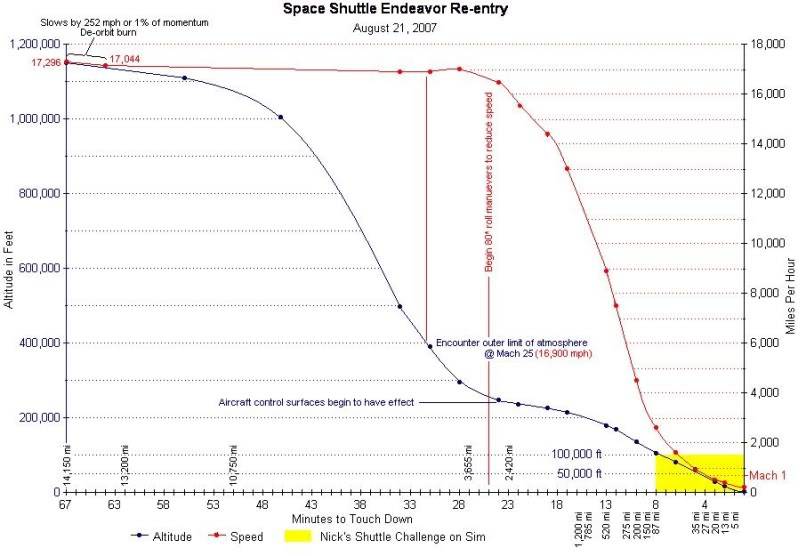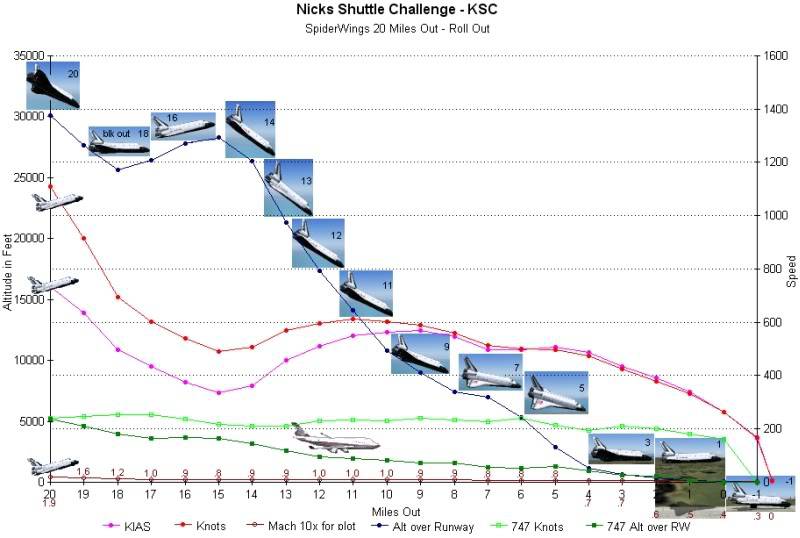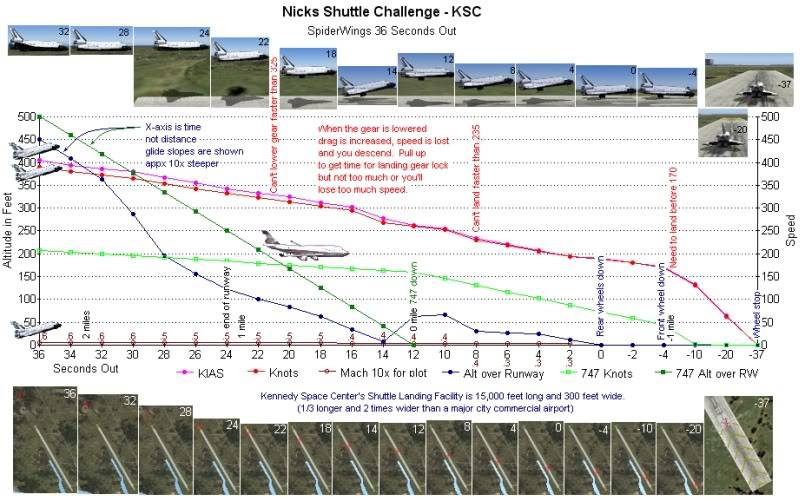cheezyflier wrote:
belgeode wrote:
cheezyflier wrote:
nice!
i have a question though...
would it be easier if you did a shallower approach?
can he really do that though if coming from orbit?
What's the rate of descent on that anyway SPider?
BTW loved the heathrow landing lol lol... what gate did you pull up to?
that's why i asked. i have no clue. i was thinking if he shallowed out from way off maybe he could, but i don't know how the shuttle "flies". i suspect that you could, if you could plan your widow properly for re-entering the atmosphere. i liked watching it, maybe i'll download it and try it myself.
Thanks for the comments guys and the interesting questions. I'll answer Belgeode's first since I know that from commentary on the NASA channel when I watched the Endeavor land last week.... or was it the week before. Time flies. The shuttle? not so much! The lady on the NASA channel said its approach (angle of attack?) is 7 times steeper than for an airliner. But at the same time the rate of descent is 20 times that of the airliner. Meaning... its falling outta the sky.
That brings me back to cheezy's original question.
I'm not a great student of aerodynamics but I think aircraft designers generally want to reduce drag, increase lift and thrust. My impression for the shuttle now is that one of the main challenges is how to get rid of speed... i.e. 17,296mph 1 hour before landing down to around 195 at rear wheel touch down.
And it does in fact dump speed VERY well.
I had some guidelines that I found on line about what phases occur during landing and one is that you want to be about 10,000 feet higher than the airport 6 miles out! So in my 400 practice attempts at Edwards thats where I saved the flight and just kept doing it over and over again actually learning what worked best.
Since my entire training here is so I can land the shuttle at Beunos Aires which has 10,000 long runway instead of 15,000 at KSC and Edwards. So I was VERY MUCH INTERESTED in a shallow approach thinking that I have to get down low short of the start of the runway and have the wheels down by the time I cross the edge of the pavement. And thats still my strategy for shorter runways.
There's a lot of things that happens with the shuttle's speed and its ability to land successfully.
You can't lower the gear above 325 kias.
You can't land any faster than 235 or you'll blow the tires.
You can't glide very long.
In order to hold a constant speed you need to be pointed DOWN.
Once you level out... being careful not to flare because it will climb a bit and thats NOT GOOD at all... she dumps speed fast.
Its like a rock you through across the pond to skip. As long as it has enough speed it keeps on going. But its very obvious that it wants to come down more than anything.
When you finally can lower the gear, drag is increased, you feel it want to go lower before the gear is fully down, and so you naturally pull up... but DON'T pull up too much or else she'll flare and rise, and in the process, dump way too much speed and you'll usually not be able to regain the proper angle of attack for a good landing before she slows below 165 which is about as slow as you can land her.
Here are some graphics I came up with to help me understand several things about landing the shuttle and about KIAS versus true airspeed and versus mach, and how mach changes with different altitudes.
First I replayed my tape of the Endeavors recent re-entry, made some notes and came up with this.
You'll notice the part I'm training for is just the last 100,000 feet and approximately 8 minutes of the whole deal.
Here's a graphic showing the first part of that for the first shuttle landing in the video. It was not a great landing... a number of errors, but I recovered. I included data on the 747 landing in the video in order to make a graphic comparison.
And here is the last 20 miles and a bit lower to the ground. Notice when I levelled out a bit 8 to 7 miles out how the decreasing speed decreased at a faster rate. From 7 to 4 miles I dove to retain the speed I'd need for a shallow approach from there on in. I was trying to stay high so I could dive just short of the airport and be assured of enough speed for the landing. But I'd already blown that chance earlier on.
And finally, I took a close look at the final 3 miles (36 seconds).
One of the most difficult parts of landing the shuttle is when you finally get to lower the gear... being anxious as you only have 15 to 20 seconds of enough speed to stay in the air. The gear going down increases drag, and you drop a bit. You need to avoid that without flaring which costs more speed, and/or climbing with the expense of speed and putting you further away from the surface extending the length of time to get back down.
When flying it level... she is dumping speed at a good rate.
I think these will also answer your question about rate of descent belgeode. As intimidating as it is in the last 8 minutes... look at how much it descends from the time of the deorbit burn until it encounters atmosphere 30 minutes and 700,000 feet later!
"Falling like a rock" comes to mind.
 First Officer
First Officer 12 Answers
12 Answers
 Jump to latest
Jump to latest
 Captain
Captain Chief Captain
Chief Captain







